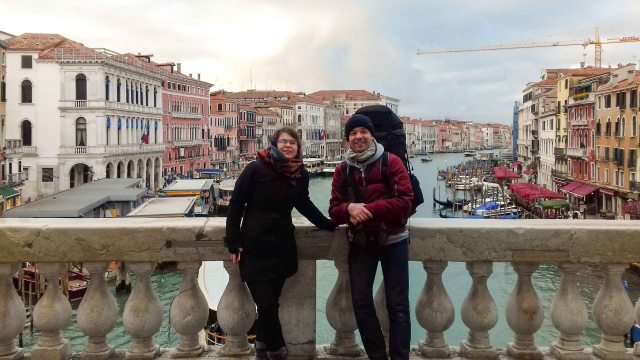Scholars, indigenous activists and students from both sides of the Atlantic (or Pacific?) met at the small Venetian island of San Servolo from 14th to 19th of January 2018. I am reporting here as part of a group of three professors and five students from Russia who attended the international graduate seminar “Northern Territories and Indigenous Peoples: Comparative perspectives”. Almost 40 participants from Canada and the US, from Italy, Belgium, Germany and Russia attend the event at Venice International University.

“The crucial thing is the way one can inhabit space. We do not have the chance to evaluate space in the same way in the North of Russia and Canada with their vast territories and sparse population. Old labyrinth-like Venice taught me to be satisfied with a tiny imagination of possibilities of life in the era of global warming, among the melting ice.” Anastasia Karaseva from Saint Petersburg.

It might seem strange to travel to Venice in January to discuss the Arctic. There might be few places on earth that seem to be less similar to each other – Venice being a densely populated small island and the Arctic as a place including different continents whose borders and populations are even difficult if not impossible to define clearly. Also in historical terms – when the star of Venice was already declining, the Arctic just started to appear on the maps of geographers. Interesting connections start to evolve: one of the early geographical atlases “Ptolemy’s Geographiae Universae” edited by Giovanni Antonio Magini and printed 1596 in Venice by Heredes Simoni Galignani presents already maps of the Arctic. Among them, a description of Siberia called Tartariae Imperium. Venetian glass was popular at that time in Russia and reached the new established Arctic towns like Mangazeya. The hunger for northern goods fuelled the expansion of trade routes into the Arctic since the middle ages and provoked the time of explorations of the 17th and 18th centuries – when the hegemony in trade for Venice was already over.
 And of course both the Arctic and Venice suffer from exotization being inundated with cliché and imagination. For the outside world they are the source of and endless stream of kitsch but also of the uncanny and demonic that is haunting the unconscious like in Hugo Pratt’s comic “Corto Maltese: In Siberia”. It might not be the best idea to start in Venice and go on a journey to Siberia in order to collect all exotic clichés and stereotypes. It might be more productive to make the reverse journey from the ‘periphery’ and try to take a sober look at the ability of both places to enchant imaginations but also to look at the social relations and power configurations behind them.
And of course both the Arctic and Venice suffer from exotization being inundated with cliché and imagination. For the outside world they are the source of and endless stream of kitsch but also of the uncanny and demonic that is haunting the unconscious like in Hugo Pratt’s comic “Corto Maltese: In Siberia”. It might not be the best idea to start in Venice and go on a journey to Siberia in order to collect all exotic clichés and stereotypes. It might be more productive to make the reverse journey from the ‘periphery’ and try to take a sober look at the ability of both places to enchant imaginations but also to look at the social relations and power configurations behind them.

The program of the Graduate Seminar interestingly united quite diverse anthropological schools. The main group was formed by researchers from Canadian universities and the National Institute of Scientific Research (INRS) as a cooperation with the DIALOG- Aboriginal Peoples Research and Knowledge Network. The seminar constituted for them the 14th edition of the Nomadic University intensive training program.

Another research tradition was present through researchers from Russia in particular from the High School of Economics and the European University at Saint Petersburg. Every of this schools represent different histories and developed different methodological approaches. They even differ in their view on the relations of indigenous peoples and other inhabitants of the Arctic. To look at social problems from the perspective of trauma and healing for instance is very unusual for researchers from Russia as it is for North-Americans to look at white people not as settlers. But research grounded in fieldwork dealing with everyday life of local inhabitants is easily understandable for scholars working in different parts and historic traditions in the Arctic.

The main target group were PhD and master students from North America, Asia and several European countries doing research mostly on and with indigenous groups. Among the teachers were indigenous activists as well. To understand the different languages of academic disciplines and schools and to detect overlapping and differences might have been the most fruitful exercise during the seminar. A lot of discussion of course as always during scientific events happened at the corridor talk at coffee breaks, receptions and during the free time. Maybe even the town added some transcendental notes to the atmosphere of the seminar as one of the Russian participants put it. One of the Canadian participants told one of the students from Venice at the first session, when she admired the view over the lagoon from the window of the lecture hall: “It’s a shame to read the papers in this weather!” to which the Venetian student replied, “I live here – it’s a shame to study in Venice”.


Interesting 🙂